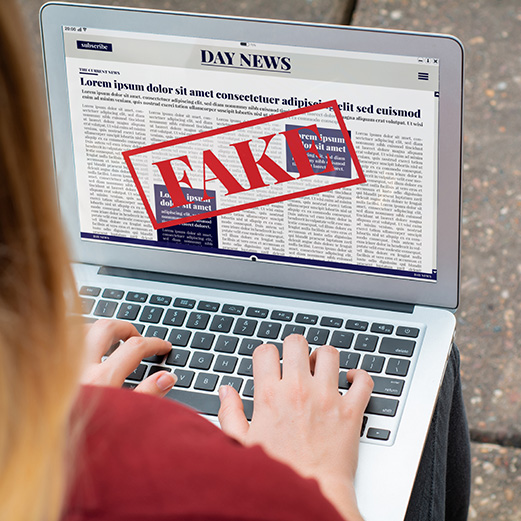Cracking the Code: Misinformation and Disinformation on Social Media
Fake news, misleading ads, and misrepresented claims – can you tell what’s real? Uncover how to spot misinformation and protect your organisation from digital deception.

Fake news, misleading ads, and misrepresented claims – can you tell what’s real? Uncover how to spot misinformation and protect your organisation from digital deception.
Social media is a digital rabbit hole. It’s staggering how much data is available at your fingertips. While it’s a key source of news and information, not all of it is true. How trustworthy and accurate is the content we consume, who determines what’s true, and how do you decipher the difference?
That’s where misinformation and disinformation come into play. Same thing? Not quite. This explainer delves into what they are – with real-life examples – and how to spot them, with practical tips to keep your organisation’s social channels above board.
Think of misinformation as a rumour mill. It is false or misleading information that is spread without an intent to deceive. Perhaps someone misreads a headline, an old statistic is reshared as ‘new news’, or a satirical story is mistaken for fact.
Conversely, disinformation is false information deliberately created to mislead, manipulate, or obscure the truth. Think fake news and ambiguous ads intended to sway opinions.
Both are on the rise globally and on a significant scale. Here are three real-life examples:
Today, the quality of news and information from credible sources on social media is diluted. Anyone with internet access is exposed, and it’s hard to know what’s real. Computer-Generated Imagery (CGI), deep fakes and synthetic media add extra layers of complexity.
How exposed is your organisation to misrepresentation or half-truths? How does your social media team verify the content they publish? Can you restrict commentary on your channels?
Social media fact checkers were once seen as a great solution…
In 2016, Meta launched a fact-checking program using third parties to verify content on its platforms.
Nine years later, it’s ending.
In January 2025, The New York Times reported that the initiative – “instituted to curtail the spread of misinformation” – was being abandoned due to concerns over censorship and, in some cases, false accusations of misinformation.
Mark Zuckerberg stated it was “time to get back to our roots around free expression”. Instead, Meta will introduce community notes, like those on X.
The lesson here? External fact-checking isn’t foolproof. Organisations must take proactive steps to verify their content and manage their social media presence carefully.
How to avoid misinformation on social media
Social media is a double-edged sword. Organisations must balance free speech with filtering out falsehoods. A reputable digital tool can be the key to maintaining integrity.
As a social media records archiving tool, Brolly is your social media safety net.
Here’s why:
And, with the upcoming Brolly Protect module, content moderation will become even easier – helping your organisation set the record straight.
Misinformation and disinformation are everywhere. Sometimes it’s innocent, sometimes it’s not. Either way, stay alert and stay protected – get a free 30-day trial of Brolly!